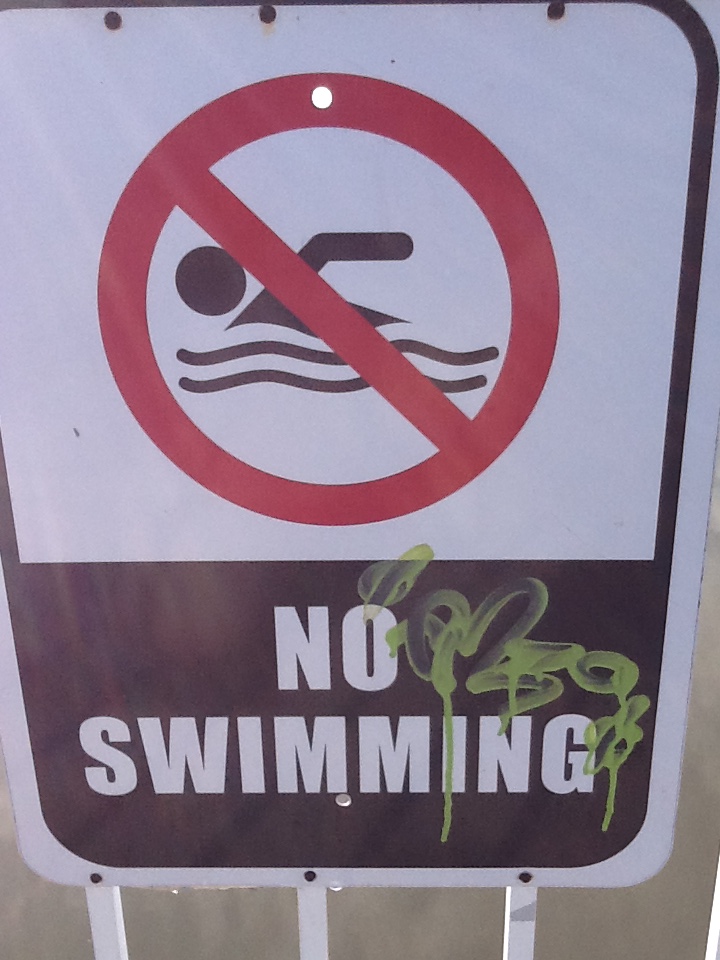
by Rick O'Connor | Feb 24, 2022
For many in the Pensacola Bay area, water quality is a top concern. Excessive nutrients, heavy metals, and fecal bacteria from run-off have all been problems. In recent years fecal bacteria has become a major concern, forcing both health advisories at public swimming areas, and shellfish harvesting closures. In a report from the Florida Department of Environmental Protection last modified in 2021, 43 sites in the Pensacola Bay area were verified as impaired and 11 of those (22%) were due to high levels of fecal bacteria1.
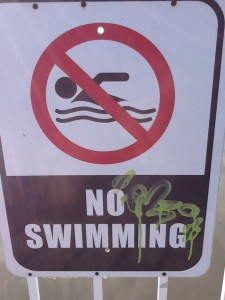
Closed due to bacteria.
Photo: Rick O’Connor
As the name implies, these are bacteria associated with the digestive tract and find their way into waterbodies via animal waste. Animal waste can harbor pathogenic organisms and contribute to algal blooms which leads to hypoxia (low dissolved oxygen in the water), and potential fish kills. As bad as hypoxia and fish kills can be, it is the health issue from the pathogens that are often the larger concern.
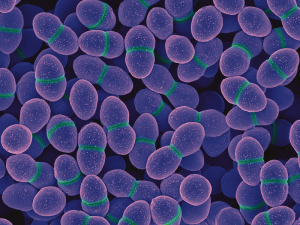
The spherical cells of the “coccus” bacteria Enterococcus.
Photo: National Institute of Health
In saline waters, the fecal bacterium Enterococcus is the species used for indication of animal waste. This bacterium is more tolerant of salt water than E. coli, or other fecal bacteria, and a better choice as an indicator for this reason. Enterococcus is found in the intestines for birds and mammals and enters waterways through their feces. Waterfowl, pets, and livestock can all be sources, but it is human waste that many point to when the bacteria counts are over the environmental thresholds set. Human waste enters the waterways either by septic or sewer overflows. It is the septic systems we will look at in this article.
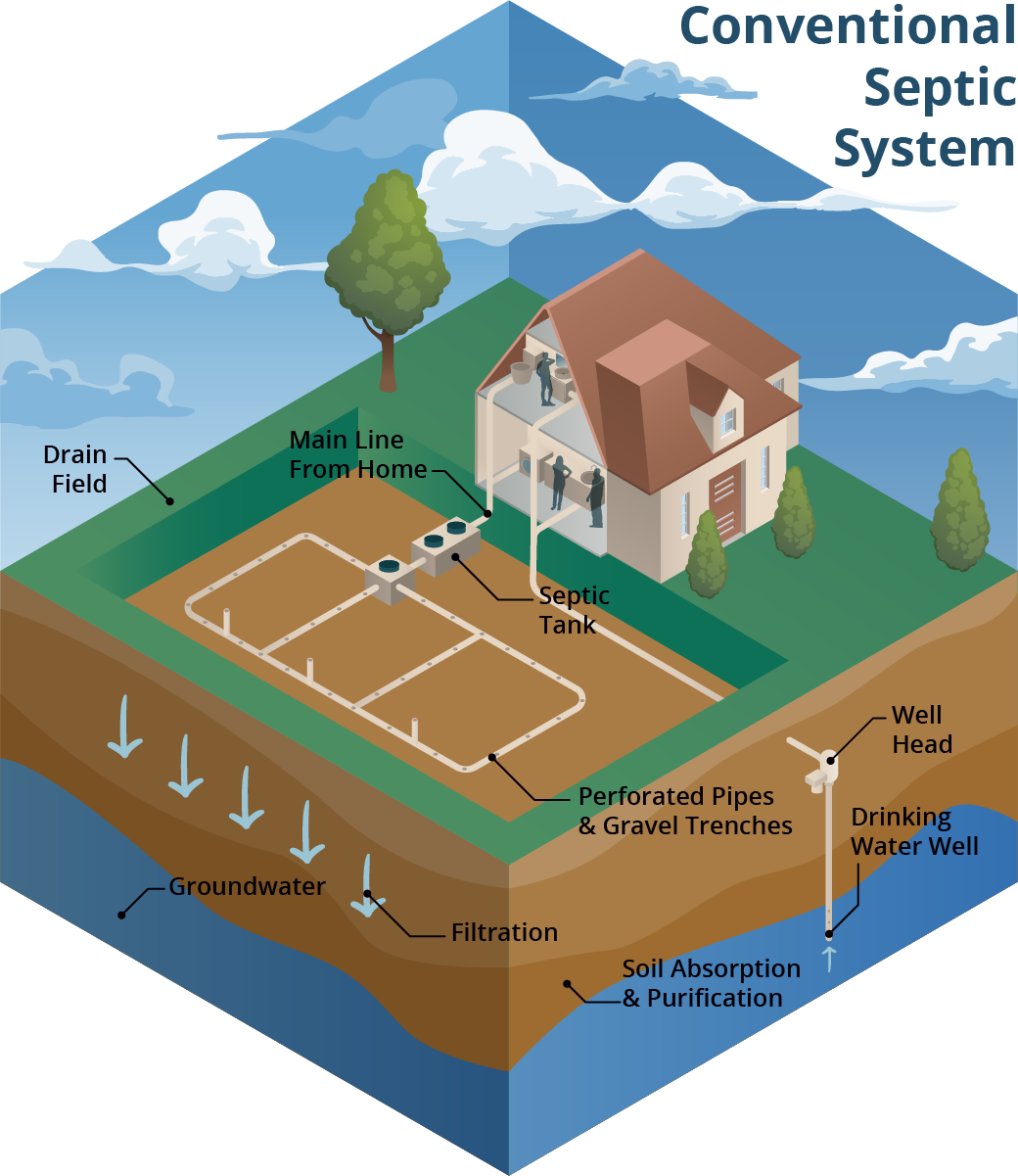
A conventional septic system is made up of a septic tank (a watertight container buried in the ground) and a drain field. Image: Soil and Water Science Lab UF/IFAS GREC.
How the septic system works…
The process of course begins when you flush. The wastewater leaves the commode and enters a pipe which leads to the septic tank outside. Here the wastewater separates. The solid waste will settle to the bottom forming a layer called sludge. Fats, oils, and grease float on water and form a top layer called scum. The untreated wastewater settles in the middle. This wastewater will drain from the septic tank into a series of smaller pipes and leach into a drain field. The drain field should be made of large grain material, like sand or gravel, that allows the filtration of the water as it dissipates into the environment. On paper this system should work well, and often does, but you can see where problems can occur.
- Was the septic system placed in the correct area? Often as a homeowner you have no control over where the tank is placed but there are regulations on this, and they should have been followed.
- Is there sufficient drain material for the effluent to effectively drain and filter (plenty of sand/gravel)?
- Is the site too close to the water table? Saturated ground will not allow for proper filtration and can create layers of untreated water to settle near the surface creating foul odors and leach into local waterways. Over the last decade the Pensacola area has seen an increase in the annual amount of rain. This increase can turn what was a suitable location into one that is no longer.
Again, many homeowners have no control over the placement of the septic but doing your due diligence when purchasing a home, you can do. Checking the situation of the septic can save you a lot of problems down the road.
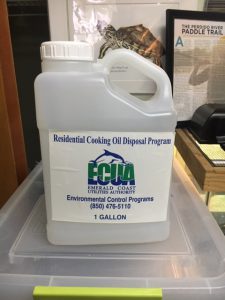
1-gallon container provided free to dispose of your oil and grease.
Photo: Rick O’Connor
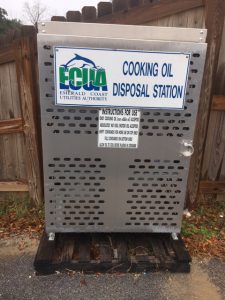
The FOG gallon containers are found in these metal cabinets placed around the county.
Photo: Rick O’Connor
- What are you flushing down the commode? Here you DO have control.
- Excessive amounts of fats, oils, and grease will increase the scum layer, and this can enter the pipes leading to the drain field causing clogging of those. Clogs can cause backups into the tank and leaks near the top as well as backups into your home. Not only can these overflows create problems in the home, but they can also end in our waterways creating water quality problems. So, what do you do with the oil and grease left over from cooking? In Escambia County, the Emerald Coast Utility authority provides what they call the FOG program2. This program provides free 1-gallon plastic jugs to place your oil and grease in. You can find these in metal cages at locations around the county, there is one at the extension office. You take it home, fill it up, and return it for a new one.
- Disposable wipes can be flushed, but they do not degrade. Excessive amounts of disposal products flushed into your septic system will certainly create clogs in the drainpipes and backups into the lawn, waterways, and your home. Do not flush these! Toss them into the trash can.
- Interestingly we are learning that milk will solidify after pouring down the drain. It forms solid chunks resembling concrete and can also create backups and overflows. This is relatively newly discovered problem. One suggestion is to pour unwanted milk on your garden, but you do not want to flush it down the drain to your septic tank.
- There has been discussion on chemical products marketed to clean your septic. Many of our experts believe that these can alter the good microbes within the tank that breakdown the solid waste layer, the sludge. This is not something you want.
- The last one is water itself. Not that you cannot flush water down the drain, but excessive amounts can create situations where either the scum or the sludge layers reach the drainpipes and form clogs. Do not use excessive amounts of water from different sources in your home at the same time. Do not overload the system.
- Driving over the septic tank or drain field.
Most understand that this can cause problems. It can compact the soil being used for the drain field, thus making it less effective at draining and filtering. It can also cause cracks in both the tank and the drainpipes, which can create leaks that allow untreated wastewater to travel away from the drain field. Be careful where you use heavy vehicle traffic on your lawn.
- Pumping out your septic system.
This is something few people do. The untreated wastewater should flow into the drain field and percolate through the sand/gravel bed. However, the scum and sludge do not drain and need to be pumped periodically. The recommended cycle for pump outs is once every 3-5 years. Again, this is something most homeowners do not do until backup problems occur. We do recommend having your system pumped on that cycle.
- Convert to a sewer system.
This is not an option for everyone, and we know for some in which it is, they are not eager to do so. But converting to a sewer takes the maintenance issue off the homeowner and onto the local utility. The conversion can be expensive but, in some communities, there are cost share programs to help with this. Check with your local utility for more information.
If placed, used, and maintained properly septic systems can last 25-30 years and not be a major problem for local waterways. Converting to a sewer system can help, but there are also problems here. We will address those in our next post.
Reference
1 Florida Department of Environmental Protection. 2021. Verified Lists for Group 4 Basins Cycle 2 – Pensacola Bay.
https://floridadep.gov/dear/watershed-assessment-section/documents/verified-lists-group-4-basins-cycle-2-pensacola-bay.
2 Fats, Oils, and Grease (FOG). Emerald Coast Utility Authority (ECUA).
https://ecua.fl.gov/live-green/fats-oils-grease.
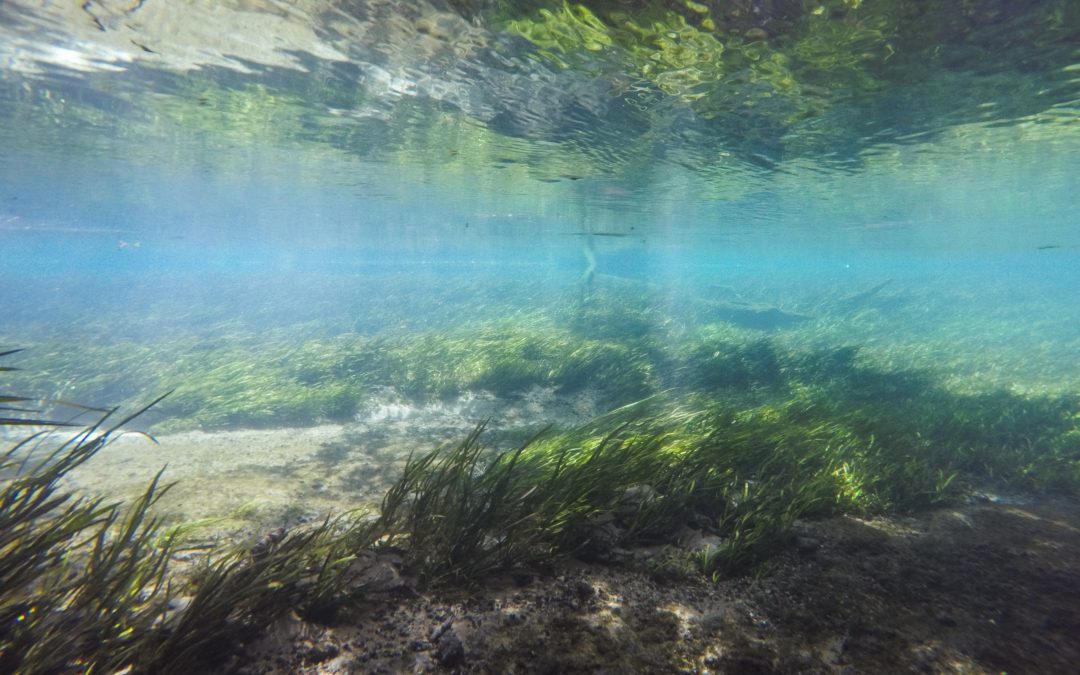
by Andrea Albertin | Apr 9, 2021
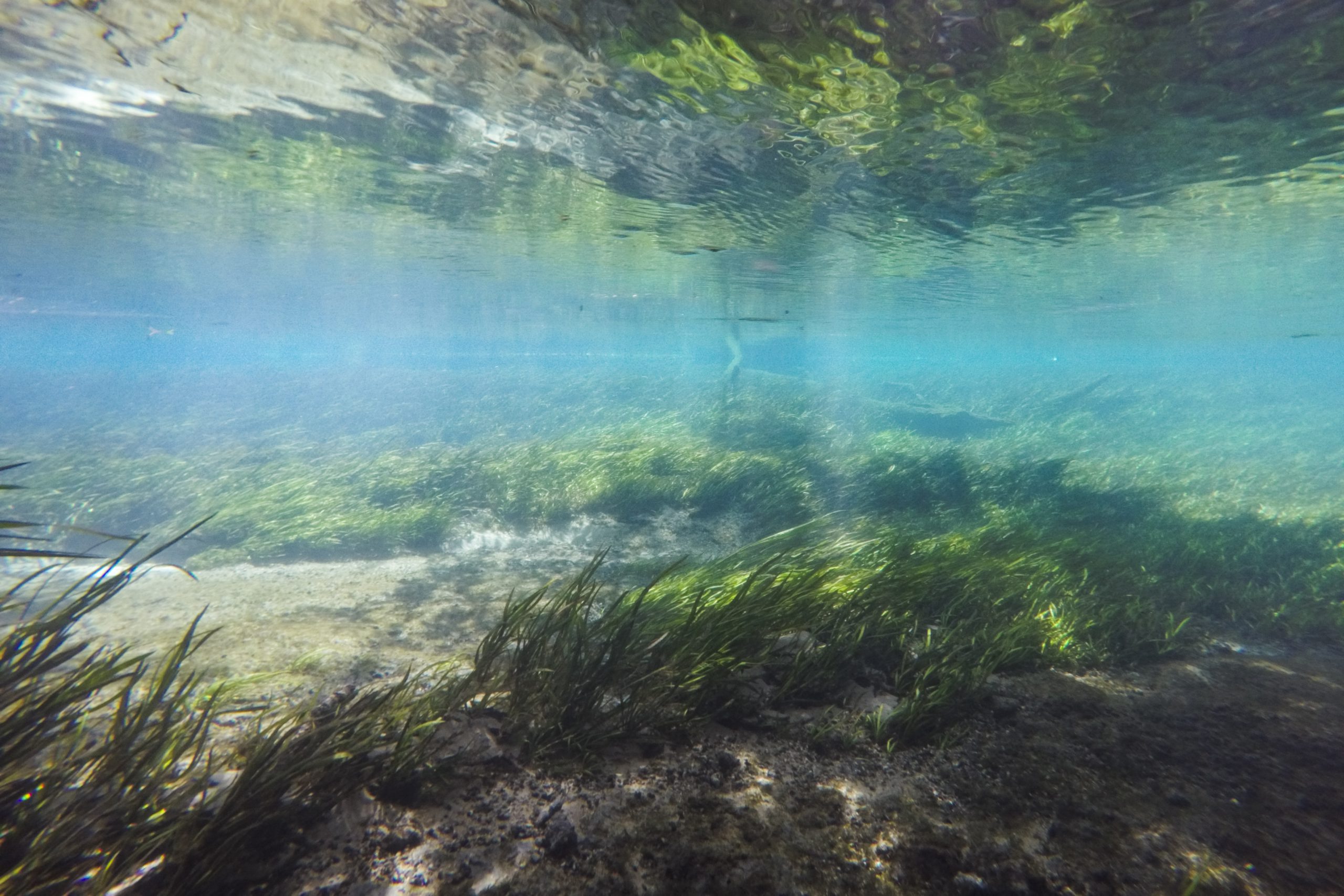
Many of Florida’s historic first magnitude springs are classified as nitrogen impaired. Image credit: UF/IFAS Communications
Septic systems are an effective means of treating wastewater when they are properly designed, constructed and maintained. Conventional systems are designed from a public health perspective and have been widely used since the 1940s to remove pathogens and protect human health. About 30% of Florida’s population relies on septic systems, which treat and dispose household wastewater drained from bathrooms, kitchens and laundry machines.
However, septic systems were not designed to remove nutrients. A conventional system removes only about 30 percent of the nitrogen that flows into it. Even a well-maintained system will become a source of nitrogen (particularly nitrate-nitrogen) to the surrounding soil in the drainfield, and may leach to groundwater. Excess nitrogen in Florida’s waterbodies can be a contributing factor to ecological community degradation and increases in algae.
What alternatives are there to conventional septic systems?
Many enhanced nitrogen removal technologies exist, but only those approved by the Florida Department of Health (FDOH) can be installed. Conventional septic systems are made up of a septic tank and a drainfield (or leachfield). Advanced treatment systems add steps to conventional system processes to improve contaminant removal. Types of advanced nitrogen removal technologies available include:
- Aerobic Treatment Units ATUs are made of fiberglass, polyurethane or concrete. Unlike conventional systems, ATUs introduce air into the sewage in the tank using a pump. By aerating waste, the organic matter in the tank is broken down faster than in a conventional system. Effluent from an ATU is discharged into a drainfield for further treatment in the soil, just as with a conventional septic system. ATUs require higher energy input than conventional septic systems to power the aerator, and regular operation and maintenance to sustain performance ATU example from the US EPA
- Performance Based Treatment Systems PBTS are specialized systems designed by professional engineers to meet specific levels of contaminant removal based on site and/or situation requirements. There are many proprietary commercial options available. Designs often include an ATU. Like ATUs, PBTS require higher energy input than conventional septic systems to power pumps, and regular maintenance is needed to sustain performance.
- In-Ground Nitrogen Removing Biofilters INRB are also referred to as modified drainfields. These systems are passive, which means they require no electric aerators or pumps to treat wastewater, and maintenance requirements are lower than those for ATUs and PBTS. INRBs are nitrogen-reducing media layers placed underneath a conventional drainfield.
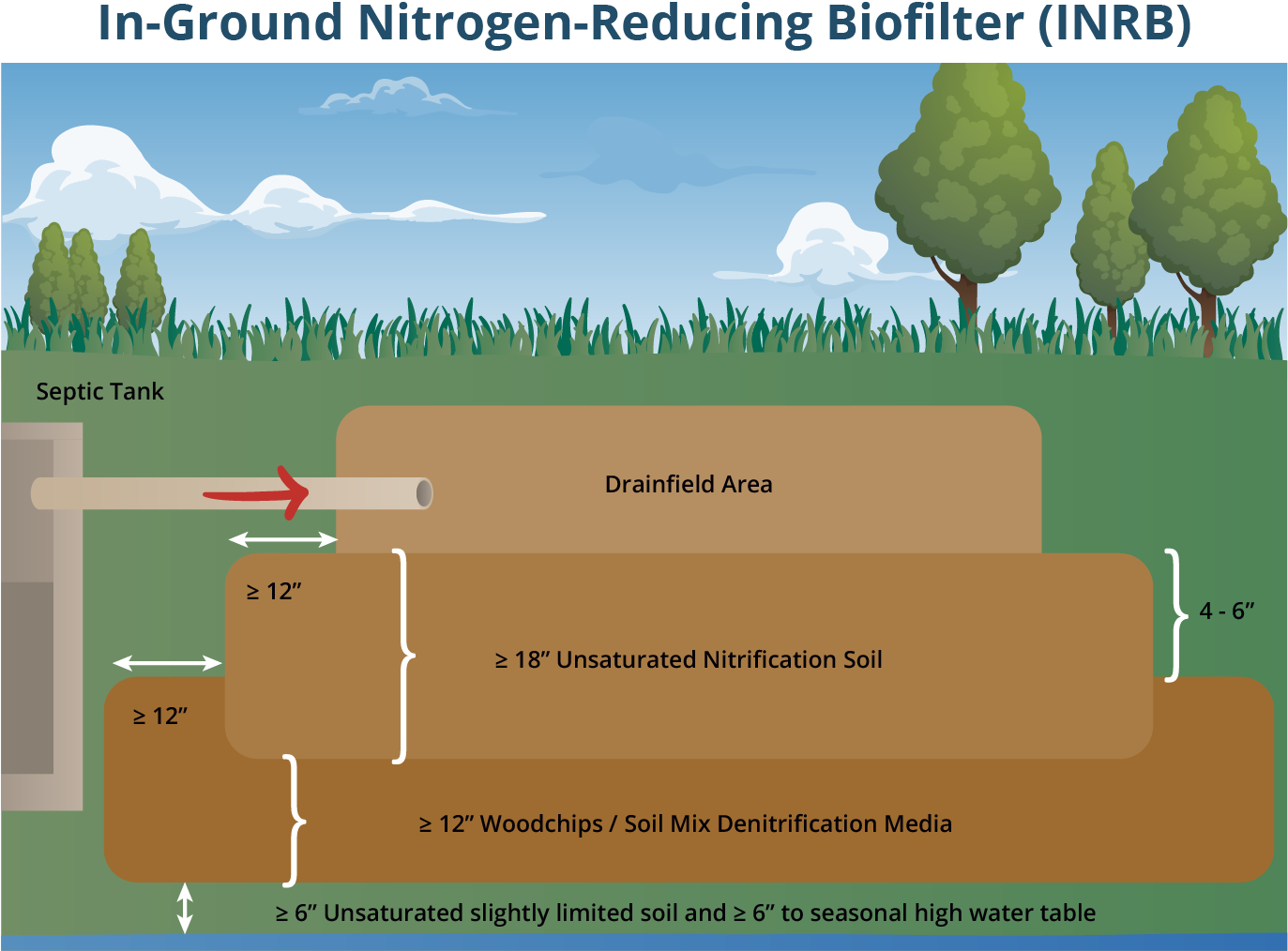
Ammonium-nitrogen in wastewater leaving the septic tank moves down through the Drainfield Area soil and an additional oxygen-rich zone (Unsaturated Nitrification Soil) to promote conversion into nitrate-nitrogen. Wastewater then passes through a low-oxygen, carbon-rich zone to promote denitrification (Woodchips/Soil Mix Denitrification Media). Denitrification is a process by which specialized bacteria convert nitrate into nitrogen gas that escapes into the atmosphere. This reduces the amount of nitrogen that can leach into groundwater.
FDOH provides comprehensive information about advanced treatment systems and requirements on their product listing and approval requirement web page.
Where are advanced treatment systems required?
The short answer is wherever a septic system remediation plan to protect Florida Springs has been put into place. The 2016 Florida Springs and Aquifer Protection Act was passed to protect 30 ‘Outstanding Florida Springs.’ The majority are historic first magnitude springs, springs with flows of more than 100 cubic ft/second. Twenty-four of these springs are identified as nitrogen impaired by the Florida Department of Environmental Protection.
If septic systems contribute more than 20% of the nitrogen load to the impaired spring, a remediation plan takes effect in specific areas (Priority Focus Areas) that are particularly susceptible to nitrogen pollution. Septic system remediation plans require new development to connect to central sewer where available. If this isn’t an option, new construction on lots of less than 1 acre must include advanced nitrogen-removal technology. In the Panhandle, areas around Wakulla Springs and Jackson Blue Springs have remediation plans.
The best source of information about specific remediation plans and whether or not you live in a Priority Focus Area is FDOH. Contact your local County Department of Health Office to find out if you live in a PFA or if you have questions about septic tank requirements, permitting and approved advanced nitrogen-treatment features for septic systems.
For more information and resources about conventional septic systems and advanced treatment system visit our UF/IFAS Septic Systems website.
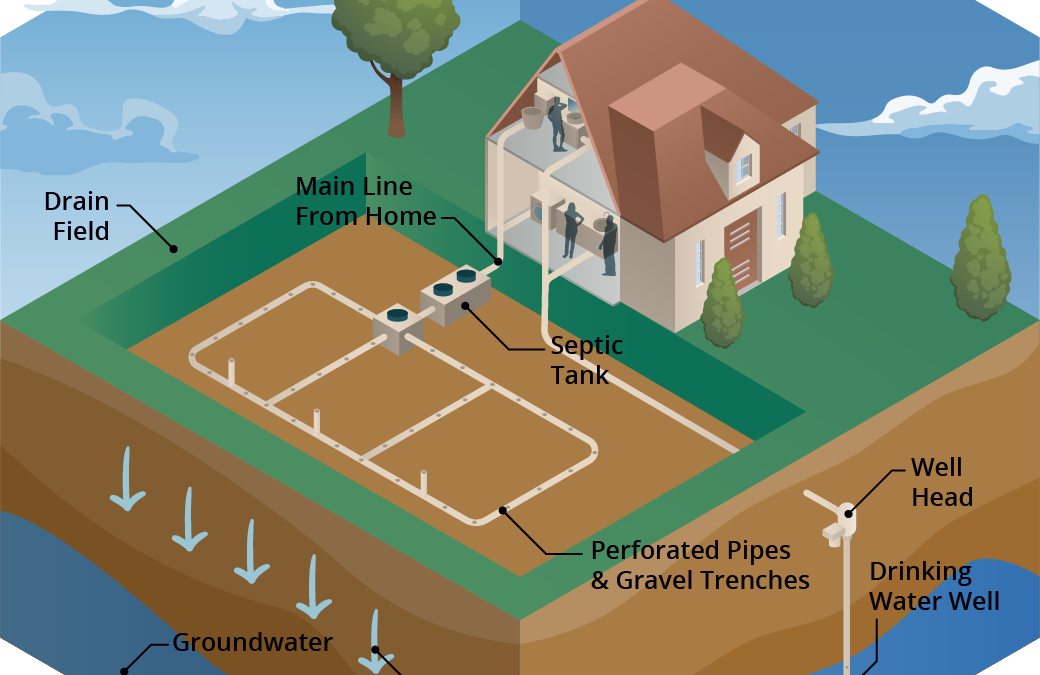
by Andrea Albertin | Jan 28, 2021
Senate Bill 712 ‘The Clean Waterways Act’ was signed into Florida law on June 30, 2020. The purpose of the bill is to better protect Florida’s water resources and focuses on minimizing the impact of known sources of nutrient pollution. These sources include septic systems, wastewater treatment plants, stormwater runoff as well as fertilizer used in agricultural production.

Senate Bill 712 focuses on protecting Florida’s water resources such as Jackson Blue Springs/Merritt’s Mill Pond, pictured here. Credit: Doug Mayo, UF/IFAS.
What major provisions are included in SB 712?
Primary actions required by SB712 were listed in a news release by Governor Desantis’ staff in June 2020 as:
- Regulation of septic systems as a source of nutrients and transfer of oversight from the Florida Department of Health (DOH) to the Florida Department of Environmental Protection (DEP).
- Contingency plans for power outages to minimize discharges of untreated wastewater for all sewage disposal facilities.
- Provision of financial records from all sanitary sewage disposal facilities so that DEP can ensure funds are being allocated to infrastructure upgrades, repairs, and maintenance that prevent systems from falling into states of disrepair.
- Detailed documentation of fertilizer use by agricultural operations to ensure compliance with Best Management Practices (BMPs) and aid in evaluation of their effectiveness.
- Updated stormwater rules and design criteria to improve the performance of stormwater systems statewide to specifically address nutrients.
How does the bill impact septic system regulation?
The transfer of the Onsite Sewage Program (OSP) (commonly known as the septic system program) from DOH to DEP becomes effective on July 1, 2021. So far, DOH and DEP submitted a report to the Governor and Legislature at the end of 2020 with recommendations on how this transfer should take place. They recommend that county DOH employees working in the OSP continue implementing the program as DOH-employees, but that the onsite sewage program office in the State Health Office transfer to DEP and continue working from there. DOH created an OSP Transfer web page where updates and documents related to the transfer are posted.
How does the bill impact agricultural operations?
SB 712 affects all landowners and producers enrolled in the Florida Department of Agriculture and Consumer Services (FDACS) BMP Program. Under this bill:
- Every two years FDACS will make an onsite implementation verification (IV) visit to land enrolled in the BMP program to ensure that BMPs are properly implemented. These visits will be coordinated between the producer and field staff from FDACS Office of Agriculture and Water Policy (OAWP).
- During these visits (and as they have done in the past), field staff will review records that producers are required to keep under the BMP program.
- Field staff will also collect information on nitrogen and phosphorus application. FDACS has created a specific form, the Nutrient Application Record Keeping Form or NARF where producers will record quantities of N and P applied. FDACS field staff will retain a copy of the NARF during the IV visit.
FDACS-OAWP prepared a thorough document with responses to SB 712 Frequently Asked Questions (FAQ’s). It includes responses to questions about site visits, the NARF and record keeping, why FDACS is collecting nutrient records and what will be done with this information. The fertilizer records collected are not public information, and are protected under the public records exemption (Section 403.067 Florida Statutes). For areas that fall under a Basin Management Action Plan (like the Jackson Blue and Wakulla Springs Basins in the Florida Panhandle), FDACS will combine the nitrogen and phosphorus application data from all enrolled properties (total pounds of N and P applied within the BMAP). It will then send the aggregated nutrient application information to FDEP.
Details of how all aspects of SB 712 will be implemented are still being worked out and we should continue to hear more in the coming months.
by Andrea Albertin | Oct 9, 2020
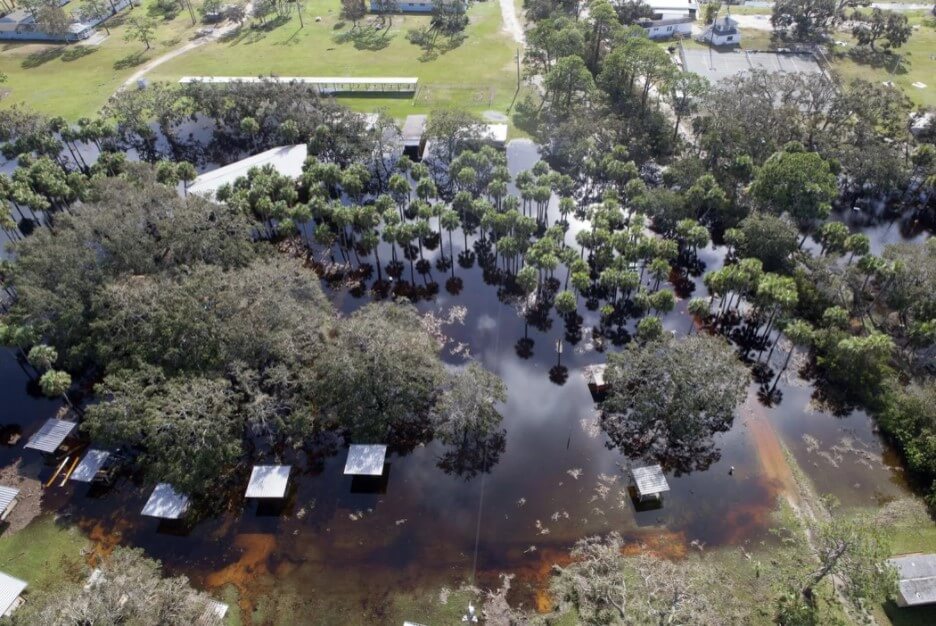
Special care needs to be taken with your septic system after flooding. Image: B. White NASA. Public Domain
During and after floods or heavy rains, the soil in your septic system drainfield can become waterlogged. For your septic system to treat wastewater, water needs to drain freely in the drainfield. Special care needs to be taken with your septic system under flood conditions.

A conventional septic system is made up of a septic tank (a watertight container buried in the gound) and a drainfield. Image: Soil and Water Science Lab UF/IFAS GREC.
A conventional septic system is made up of a septic tank and a drainfield or leach field. Wastewater flows from the septic tank into the drainfield, which is typically made up of a distribution box (to ensure the wastewater is distributed evenly) and a series of trenches or a single bed with perforated PVC pipes. Wastewater seeps from these pipes into the surrounding soil. Most wastewater treatment occurs in the drainfield soil. When working properly, many contaminants, like harmful bacteria, are removed through die-off, filtering and interaction with soil surfaces.
What should you do if flooding occurs?
The U.S. Environmental Protection Agency (EPA) offers these guidelines:
- Relieve pressure on the septic system by using it less or not at all until floodwaters recede and the soil has drained. Under flooded conditions, wastewater can’t drain in the drainfield and can back up in your septic system and household drains. Clean up floodwater in the house without dumping it into the sinks or toilet. This adds additional water that an already saturated drainfield won’t be able to process. Remember that in most homes all water sent down the pipes goes into the septic system.
- Avoid digging around the septic tank and drainfield while the soil is waterlogged. Don’t drive vehicles or equipment over the drainfield. Saturated soil is very susceptible to compaction. By working on your septic system while the soil is still wet, you can compact the soil in your drainfield, and water won’t be able to drain properly. This reduces the drainfield’s ability to treat wastewater and leads to system failure.
- Don’t open or pump the septic tank if the soil is waterlogged. Silt and mud can get into the tank if it is opened and can end up in the drainfield, reducing its drainage capability. Pumping under these conditions can cause a tank to float or ‘pop out’ of the ground, and can damage inlet and outlet pipes.
- If you suspect your system has been damaged, have the tank inspected and serviced by a professional. How can you tell if your system is damaged? Signs include: settling, wastewater backs up into household drains, the soil in the drainfield remains soggy and never fully drains, a foul odor persists around the tank and drainfield.
- Keep rainwater drainage systems away from the septic drainfield. As a preventive measure, make sure that water from roof gutters doesn’t drain towards or into your septic drainfield. This adds an additional source of water that the drainfield has to process.
- Have your private well water tested if your septic system or well were flooded or damaged in any way. Your well water may not be safe to drink or use for household purposes (making ice, cooking, brushing teeth or bathing). You need to have it tested by the Health Department or other certified laboratory for total coliform bacteria and coli to ensure it is safe to use.
For more information on septic system maintenance after flooding, go to:
More information on having your well water tested can be found at:
More Information on conventional and advanced treatment septic systems can be found on the UF/IFAS Septic System website
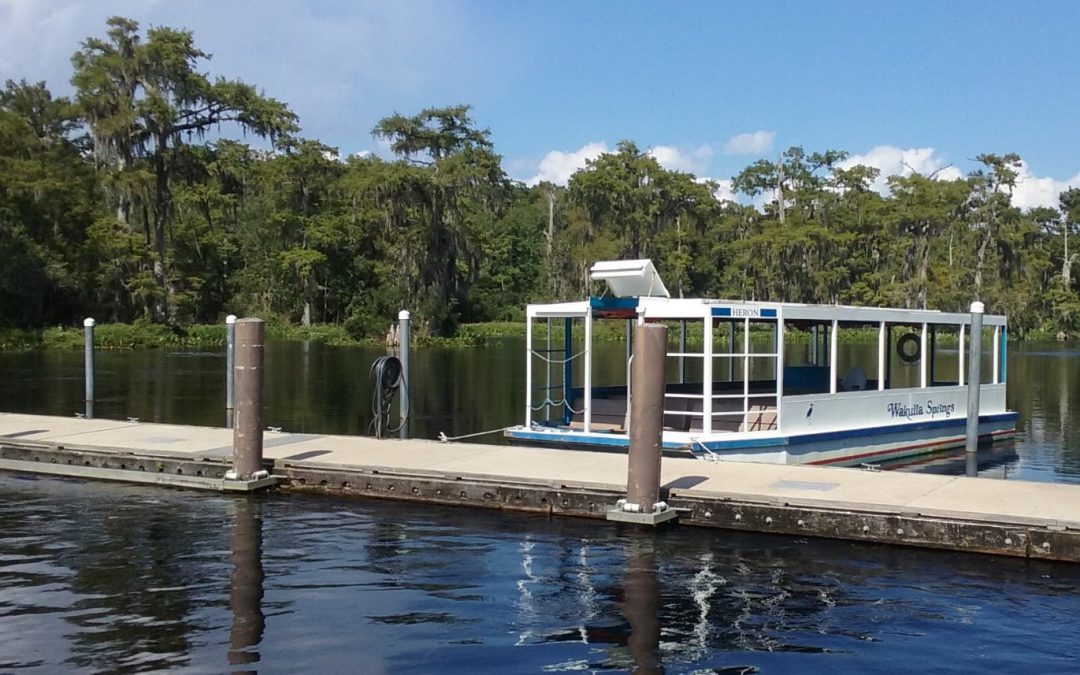
by Andrea Albertin | May 3, 2019
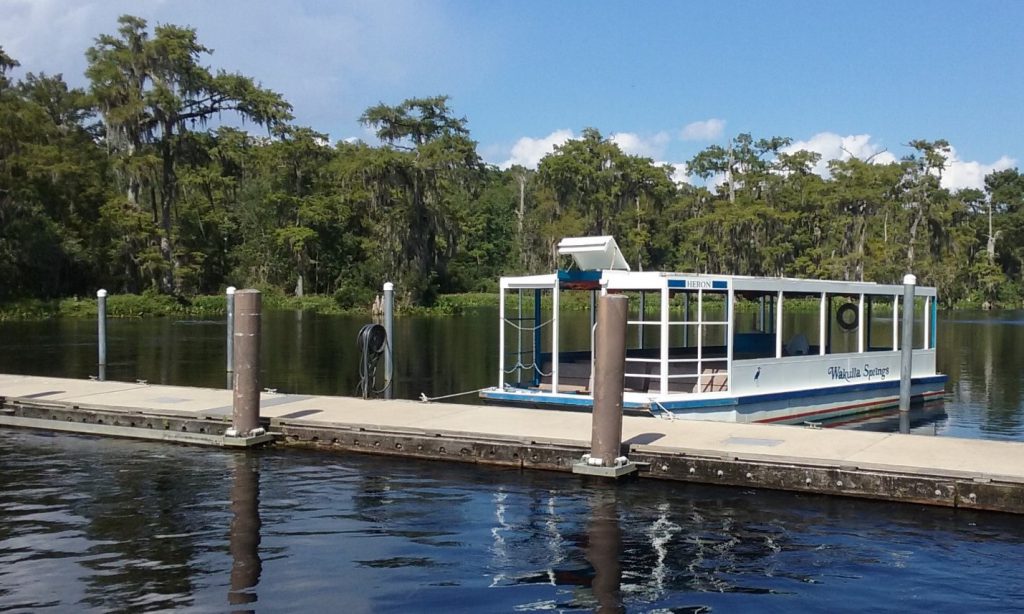
The major goal of the Wakulla Springs Basin Management Action Plan (BMAP) is to reduce nitrogen loads to Wakulla Springs. Septic systems are identified as the primary source of this nitrogen. Photo: A. Albertin
A Basin Management Action Plan, or BMAP, is a management plan developed for a waterbody (like a spring, river, lake, or estuary) that does not meet the water quality standards set by the state. One or more pollutants can impair a waterbody. In Florida, the most common pollutants are nutrients (particularly nitrate), pathogens (fecal coliform bacteria) and mercury.
The goal of the BMAP is to reduce the pollutant load to meet water quality standards set by the Florida Department of Environmental Protection (FDEP). BMAPS are roadmaps with a list of projects and management action items to reach these standards. FDEP develops them with stakeholder input. Targets are set at 20 years, and progress towards those targets is assessed every five years.
It’s important to understand that a BMAP encompasses the entire land area that contributes water to a given waterbody. For example, the land area that contributes water to Jackson Blue Springs and Merritts Mill Pond (either from surface waters or groundwater flow) is 154 square miles, while the Wakulla Springs Basin covers an area of 1,325 square miles.
BMAPs in the Panhandle
There are 33 adopted BMAPS in the state, and 5 that are pending adoption. Here in the Panhandle, we have three adopted BMAPS. They are the Bayou Chico BMAP in Escambia County, the Wakulla Springs BMAP in Wakulla, Leon, Gadsden and small parts of Jefferson County, and the Jackson Blue/Merritts Mill Pond BMAP in Jackson County. All three are impaired for different reasons.
- Bayou Chico discharges into Pensacola Bay and is polluted by fecal coliform bacteria. The BMAP addresses ways to reduce coliforms from humans and pets, which includes sewer expansion projects, stormwater runoff management, septic tank inspections, pet waste ordinances and a Clean Marina and Boatyard program.
- Wakulla Springs Nitrate from human waste is the main pollutant to Wakulla Springs, and Tallahassee’s wastewater treatment facility and the city’s Southeast Sprayfield were identified as the main sources. Both sites were upgraded (the sprayfield was moved), greatly reducing nitrate contributions to the spring basin. The BMAP is focused on septic systems and septic to sewer hookups.
- Jackson Blue/Merritts Mill Pond Nitrate is also the primary pollutant to the Jackson Blue/Merritts Mill Pond Basin, but nitrogen fertilizer from agriculture is identified as the main source. This BMAP focuses on farmers implementing Best Management Practices (BMPs), land acquisition by the Northwest Florida Water Management District , as well as septic tanks, recognizing their nitrogen contribution to Merritts Mill Pond.
Once all the BMAPS are adopted, FDEP states that almost 14 million acres will be under active basin management, an area that includes more than 6.5 million Floridians.
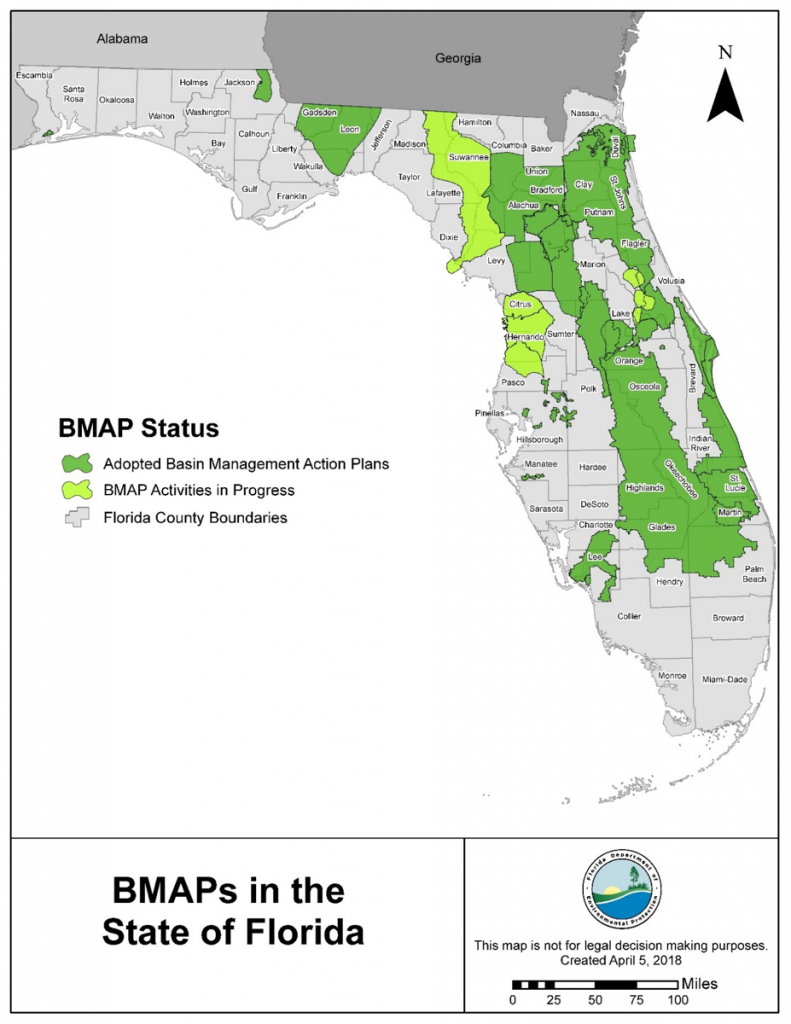
Adopted and pending BMAPS in Florida. Source: FDEP Statewide Annual Report, June 2018
How are residents living in an area with a BMAP affected? It varies by BMAP and specifically land use within its boundaries. For example, in BMAPs where nitrogen from septic systems are found to be a major source of nutrient impairment to a water body, septic to sewer hookups, or septic system upgrades to more advanced treatment units will be required in specific areas. In urban areas where nitrogen fertilizer is an important source, municipalities are required to adopt fertilizer ordinances. Where nitrogen fertilizer from agricultural production is a major source of impairment, producers are required to implement Best Management Practices to reduce nitrogen loads.
More information about BMAPS
For specific information on BMAPS, FDEP has an excellent website: https://floridadep.gov/dear/water-quality-restoration/content/basin-management-action-plans-bmaps All BMAPs (full reports with specific action items listed) can be found there, along with maps, information about upcoming meetings and webinars and other pertinent information.
Your local Health Department Office is the best resource regarding septic systems and any ordinances that may apply to you depending on where you live. Your Water Management District (in the Panhandle it’s the Northwest Florida Water Management District) is also an excellent resource and staff can let you know whether or not you live or farm in an area with a BMAP and how that may affect you.
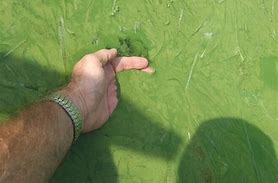
by Rick O'Connor | Aug 17, 2018
Being in the panhandle of Florida you may, or may not, have heard about the water quality issues hindering the southern part of the state. Water discharged from Lake Okeechobee is full of nutrients. These nutrients are coming from agriculture, unmaintained septic tanks, and developed landscaping – among other things. The discharges that head east lead to the Indian River Lagoon and other Intracoastal Waterways. Those heading west, head towards the estuaries of Sarasota Bay and Charlotte Harbor.

A large bloom of blue-green algae (cyanobacteria) in south Florida waters.
Photo: NOAA
Those heading east have created large algal blooms of blue-green algae (cyanobacteria). The blooms are so thick the water has become a slime green color and, in some locations, difficult to wade. Some of developed skin rashes from contacting this water. These algal blooms block needed sunlight for seagrasses, slow water movement, and in the evenings – decrease needed dissolved oxygen. When the algae die, they begin to decompose – thus lower the dissolved oxygen and triggering fish kills. It is a mess – both environmentally and economically.
On the west coast, there are red tides. These naturally occurring events happen most years in southwest Florida. They form offshore and vary in intensity from year to year. Some years beachcombers and fishermen barely notice them, other years it is difficult for people to walk the beaches. This year is one of the worst in recent memories. The increase in intensity is believed to be triggered by the increase in nutrient-filled waters being discharged towards their area.
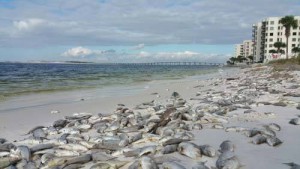
Dead fish line the beaches of Panama City during a red tide event in the past.
Photo: Randy Robinson
On both coasts, the economic impact has been huge and the quality of life for local residents has diminished. Many are pointing the finger at the federal government who, through the Army Corp of Engineers, controls flow in the lake. Others are pointing the finger at shortsighted state government, who have not done enough to provide a reserve to discharge this water, not enforced nutrient loads being discharged by those entities mentioned above. Either way, it is a big problem that has been coming for some time.
As bad as all of this is, how does this impact us here in the Florida panhandle?
Though we are not seeing the impacts central and south Florida are currently experiencing, we are not without our nutrient discharge issues. Most of Florida’s world-class springs are in our part of the state. In recent years, the water within these springs have seen an increase in nutrients. This clouds the water, changing the ecology of these systems and has already affected glass bottom boat tours at some of the classic springs. There has also been a decline in water entering the springs due to excessive withdrawals from neighboring communities. The increase in nutrients are generally from the same sources as those affecting south Florida.
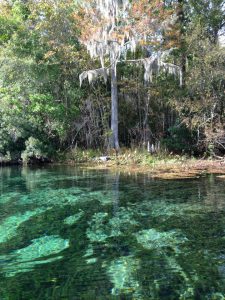
Florida’s springs are world famous. They attracted native Americans and settlers; as well as tourists and locals today.
Photo: Erik Lovestrand
Though we are not seeing large algal blooms in our local estuaries, there are some problems. St. Joe Bay has experienced some algal blooms, and a red tide event, in recent years that has forced the state to shorten the scallop season there – this obviously hurts the local economy. Due to stormwater runoff issues and septic tanks maintenance problems, health advisories are being issued due to high fecal bacteria loads in the water. Some locations in the Pensacola area have levels high enough that advisories must be issued 30% of the time they are sampled – some as often as 40%. Health advisories obviously keep tourists out of those waterways and hurt neighboring businesses as well as lower the quality of life for those living there.
Then of course, there is the Apalachicola River issue. Here, water that normally flows from Georgia into the river, and eventually to the bay, has been held back for water needs in Georgia. This has changed flow and salinity within the bay, which has altered the ecology of the system, and has negatively impacted one of the more successful seafood industries in the state. The entire community of Apalachicola has felt the impact from the decision to hold the water back. Though the impacts may not be as dramatic as those of our cousins in south Florida, we do have our problems.

Bay Scallop Argopecten iradians
http://myfwc.com/fishing/saltwater/recreational/bay-scallops/
What can we do about it?
The quick answer is reduce our nutrient input.
The state has adopted Best Management Practices (BMPs) for farmers and ranchers to help them reduce their impact on ground water and surface water contamination from their lands. Many panhandle farmers and ranchers are already implementing these BMPs and others can. We encourage them to participate. Read more at Florida’s Rangeland Agriculture and the Environment: A Natural Partnership – https://nwdistrict.ifas.ufl.edu/nat/2015/07/18/floridas-rangeland-agriculture-and-the-environment-a-natural-partnership/.
As development continues to increase across the state, and in the panhandle, sewage infrastructure is having trouble keeping up. This forces developments to use septic tanks. Many of these septic systems are placed in low-lying areas or in soils where they should not be. Others still are not being maintained property. All of this leads to septic leaks and nutrients entering local waterways. We would encourage local communities to work with new developments to be on municipal sewer lines, and the conversion of septic to sewer in as many existing septic systems as possible. Read more at Maintaining Your Septic Tank – https://nwdistrict.ifas.ufl.edu/nat/2017/04/29/maintain-your-septic-system-to-save-money-and-reduce-water-pollution/.
And then there are the lawns. We all enjoy nice looking lawns. However, many of the landscaping plans include designs that encourage plants that need to be watered and fertilized frequently as well as elevations that encourage runoff from our properties. Following the BMPs of the Florida Friendly Landscaping ProgramTM can help reduce the impact your lawn has on the nutrient loads of neighboring waterways. Read more at Florida Friendly Yards – https://nwdistrict.ifas.ufl.edu/nat/2018/06/08/restoring-the-health-of-pensacola-bay-what-can-you-do-to-help-a-florida-friendly-yard/.
For those who have boats, there is the Clean Boater Program. This program gives advice on how boaters can reduce their impacts on local waterways. Read more at Clean Boater – https://floridadep.gov/fco/cva/content/clean-boater-program.
One last snippet, those who live along the waterways themselves. There is a living shoreline program. The idea is return your shoreline to a more natural state (similar to the concept of Florida Friendly LandscapingTM). Doing so will reduce erosion of your property, enhance local fisheries, as well as reduce the amount of nutrients reaching the waterways from surrounding land. Installing a living shoreline will take some help from your local extension office. The state actually owns the land below the mean high tide line and, thus, you will need permission (a permit) to do so. Like the principals of a Florida Friendly Yard, there are specific plants you should use and they should be planted in a specific zone. Again, your county extension office can help with this. Read more at The Benefits of a Living Shoreline – https://nwdistrict.ifas.ufl.edu/nat/2017/10/06/the-benefits-of-a-living-shoreline/.
Though we may not be experiencing the dramatic problems that our friends in south Florida are currently experiencing, we do have our own problems here in the panhandle – and there is plenty we can do to keep the problems from getting worse. Please consider some of them. You can always contact your local county extension office for more information.



















